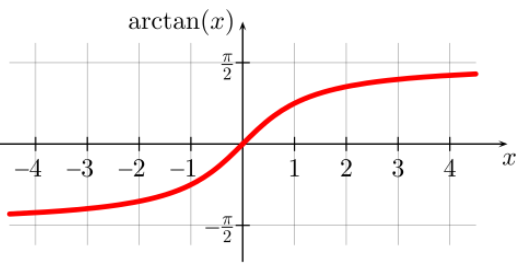 Home
Home
 Back
Back

Definition: This calculator computes the arcus tangent (inverse tangent, or arctan) of a number \( x \), which is the angle \( y \) such that \( \tan(y) = x \). It also supports reverse calculation, computing \( \tan(y) \) given an angle \( y \) in degrees. The angle output can be displayed in degrees (default) or radians.
Purpose: It aids in trigonometry education and applications by finding angles from tangent values or vice versa, useful in fields like geometry, physics, and engineering for solving problems involving right triangles or angular relationships.
The calculator uses the following formulas:
Steps:
Arcus tangent calculations are essential for:
Examples:
Q: What is the arcus tangent?
A: The arcus tangent (arctan) is the inverse of the tangent function, finding the angle \( y \) such that \( \tan(y) = x \). Its domain is all real numbers, and its range is \((-90^\circ, 90^\circ)\).
Q: Why is the tangent undefined at certain angles?
A: The tangent function is undefined at angles where the cosine is zero, i.e., \( 90^\circ + k \cdot 180^\circ \), because \( \tan(y) = \frac{\sin(y)}{\cos(y)} \), and division by zero is undefined.
Q: Why does the angle output default to degrees?
A: Degrees are the default unit for angles as they are commonly used in educational and practical applications, but you can switch to radians using the dropdown.